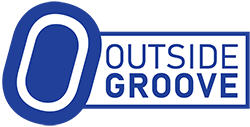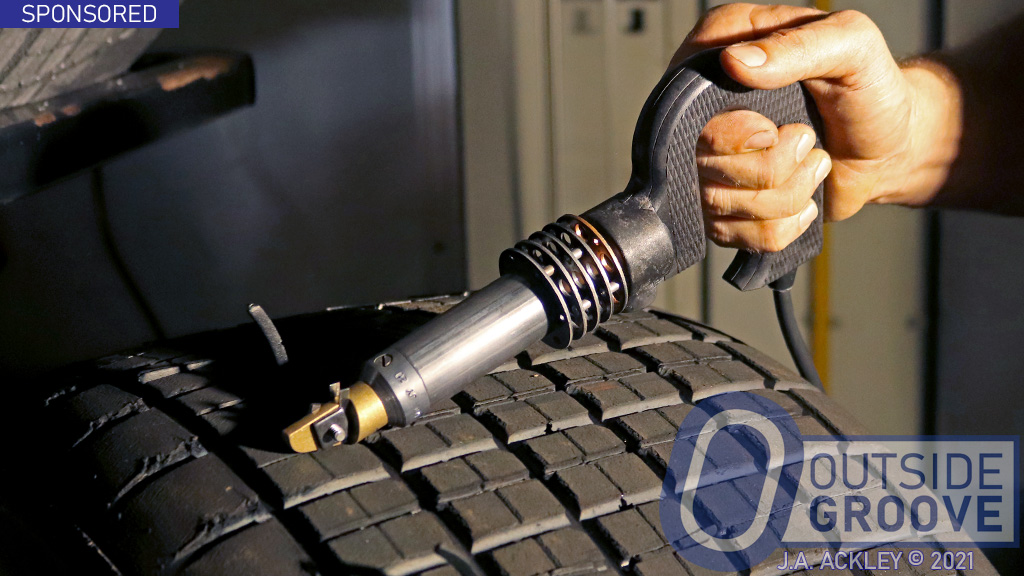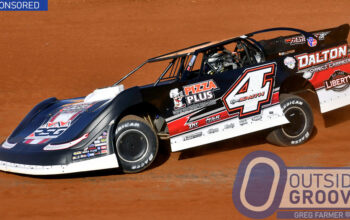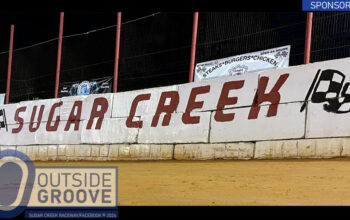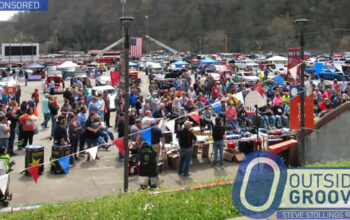Ideal Heated Knives, Inc., the manufacturer of the Ideal Tire Groover, commissioned us to research tire grooving techniques. Specifically, when is it appropriate to groove tires wide and when to groove them narrow? Three professional dirt late model crewmen — Tyler Breashears, JC Crockett, and Jeff Strope — offered their advice.
Breashears earned two Lucas Oil Late Model Dirt Series championships (2018–19) while crewing for driver Jonathan Davenport, of Blairsville, Georgia. These days he works for Ahnna Parkhurst Racing, of Evans, Georgia. While racing regionally now, Breashears sees one major area of improvement for hobbyist racers.
“Guys do the baseline cut, but they can be more aggressive, with wider, deeper cuts, and more cuts overall,” said Breashears of tire grooving. “They just groove with one size blade and they cut all four tires the same exact way. The left-front tire doesn’t get as much as heat in it, so you need to cut it up more. People think the left- or right-rear tire is most important. I feel the left-front is most important, because it’s the most overlooked tire.”
With driver Jimmy Owens, of Newport, Tennessee, Strope won four Lucas Oil Late Model Dirt Series titles (2011, ’12, ’13, ’20) as a crew member. Now, he prepares cars for brothers Mack McCarter and Pierce McCarter, of Gatlinburg, Tennessee. As with Breashears, Strope said racers often groove timidly, with grooves too narrow. Wider grooves help rapidly evacuate dirt, which is especially important on tracks that have a lot of loose dirt or mud.
“The best way to decide if you’re grooving wide enough is to find some loose dirt, pile it up somewhere, and roll your tire through it,” Strope said. “Check if you can see the actual groove of the tire in that dirt. If you can, you’re wide enough.”
Crockett currently works for the Lucas Oil Late Model Dirt Series points leader, Tim McCreadie. He said wide grooves serve a purpose, but on dry, slick, and abrasive tracks, or if you’re using a harder tire compound, you want to incorporate smaller grooves.
“At somewhere abrasive, like Cherokee Speedway in Gaffney, South Carolina, bigger grooves are going to wear the tire faster because there’s less rubber to wear,” said Crockett. “The drier and slicker the track, the smaller you can do the grooves, because you’re not worried about cleaning that tire out. You’re worried about more edges, which provide more opportunities to grab into the racetrack.”
Ultimately wider isn’t always better when it comes to grooves, but nor is narrower. By using the grooves sized for your track conditions, you can maximize the traction that your tire can provide.
For more on tire groovers, consider the Ideal Tire Groover (see “Ideal Tire Groover: A Cut Above the Rest”). The groover offers several different sizes of blades and provides exceptional value for virtually an entire racing career. It’s durable. It performs. And, it’s affordable.
Source
Ideal Heated Knives
New Hudson, Michigan
248-437-1510
idealheatedknives.com
Outside Groove Note of Transparency: Ideal Heated Knives paid for the production of this article. The content was subject to approval of Ideal Heated Knives.
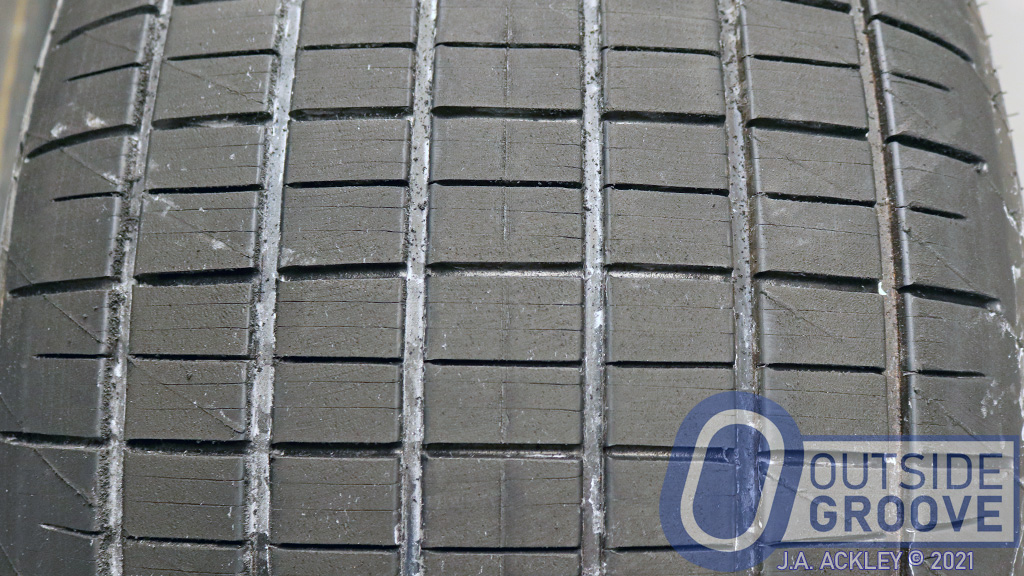
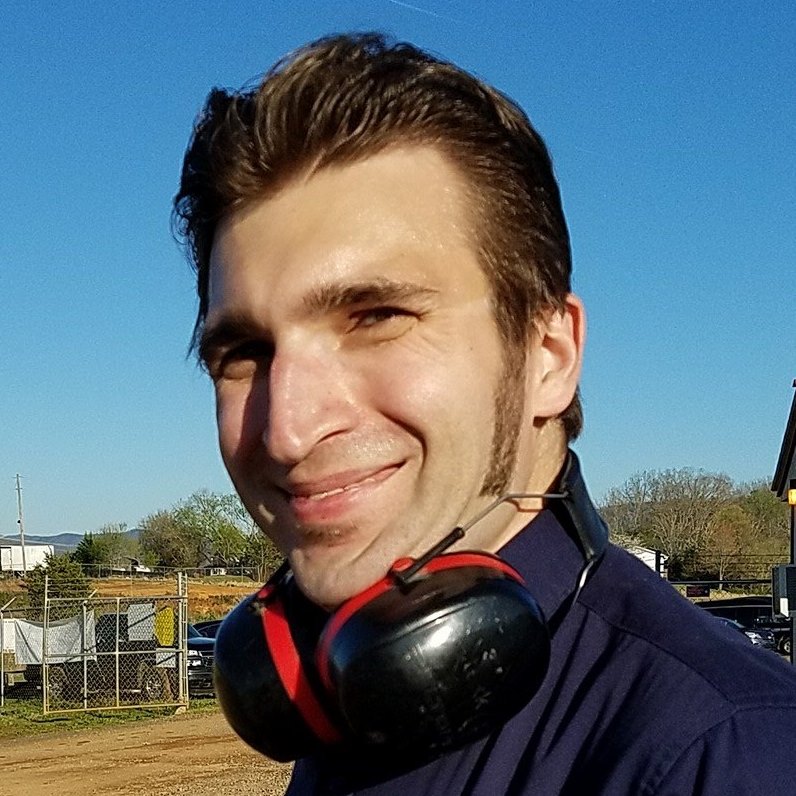
The Outside Groove Executive Editor has covered motorsports since 2000. His many awards include the 2019 Eastern Motorsport Press Association (EMPA) Jim Hunter Writer of the Year and the 2013 Russ Catlin Award for Excellence in Motorsports Journalism.
